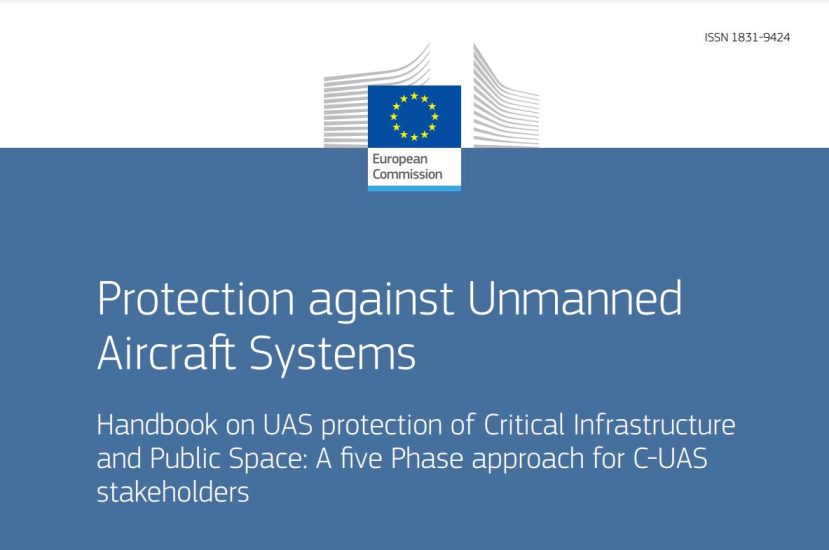The European Commission has today published a communication on countering threats posed by unlawful and dangerous use of drones that are designed for civil use.
“With this Communication, the Commission sets out a comprehensive EU counter-drone policy that aims to ensure that rapid technological developments and the growing number of drones do not lead to an uncontrolled increase in threats in civil space. It also aims to provide a harmonised policy framework and build a common understanding of applicable procedures to face the continuously evolving threats,” said the Commission in a press statement.
“Drones are shaping the future of Europe’s economy and society, notably in the domains of transport, defence, commerce, and services,” continued the statement. “The legitimate use of drones is a key part of the path towards the twin green and digital transitions. As mentioned in the Counter-terrorism agenda, while the EU has made it difficult to use certain drones for malicious purposes, their rapid advancing capabilities pose growing security risks. They have been used by criminals engaged in smuggling and drug trafficking, suspicious drones were detected around critical infrastructure, indicating the potential misuse of drones for hostile information gathering. In addition, the unlawful use of drones can also affect the personal safety and right to privacy of individual members of the public, notably when drones are operated in residential areas.”
The communication is accompanied by two handbooks developed by the Commission’s Joint Research Centre which entail practical guidance on key technical aspects of the EU Drone policy .
The communication outlines various actions related to community building and information sharing among Member States, as well as clear measures aiming at supporting them with guidance, training, funding and operational procedures. It identifies six clear activities for an effective implementation of an EU Drone policy:
Sharing good practices and information through streamlining the work of existing initiatives and setting up a Commission counter-drone expert group.
Exploring regulatory measures by identifying regulatory needs and the potential for harmonising laws and procedures across the EU.
Assisting Member States in choosing from a variety of commercial cyber and non-cyber-counter-drone technologies available on the market, by providing advice and guidance via for example the dedicated counter-drone expert group and the work of the Joint Research Centre (JRC).
Offering practical guidance and operational support to Member States by extending existing counter-drone training for example to the private security sector and law enforcement authorities.
Reinforcing research and innovation through available budget programmes such as Horizon Europe.
Increasing funding support through the launch of the call for proposals on counter-drone solutions under the Internal Security Fund thematic facility work programmes for 2026-2027.
“The activities outlined in this Communication will cover the period until 2030,” said the Commission. By 2027, there will be a mid-term stocktaking, while a full revision of the EU’s counter-drone programme is planned by 2030 at the latest.
“Both the EU’s Security Union strategy and the EU Counter-terrorism Agenda stress that the threat of non-cooperative drones is a serious concern in Europe. In 2022, this package was already announced as a flagship action under the Commission Communication ” A Drone Strategy 2.0 for a Smart and Sustainable Unmanned Aircraft Eco-System in Europe “.
The Commission has been working with Member States and other stakeholders on fighting the potential threats posed by drones since 2016 when the first EU counter-drone workshop took place. Since then, a wide array of initiatives have been taken, including funding of projects for community building, information sharing and development of best practices.
For More Information
Communication on countering potential threats posed by drones
Drone Strategy 2.0: Creating a large-scale European drone market
https://ec.europa.eu/commission/presscorner/detail/en/ip_23_4993




